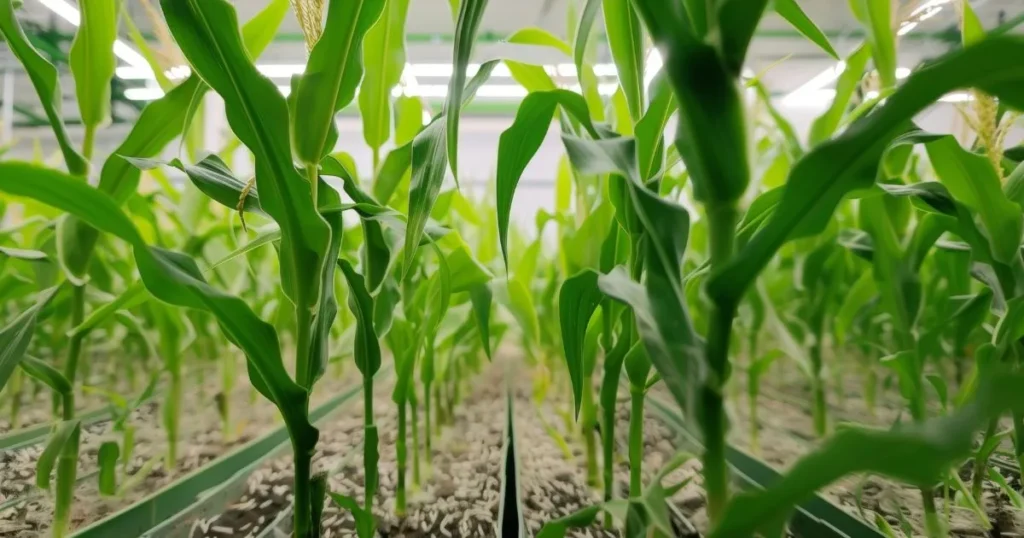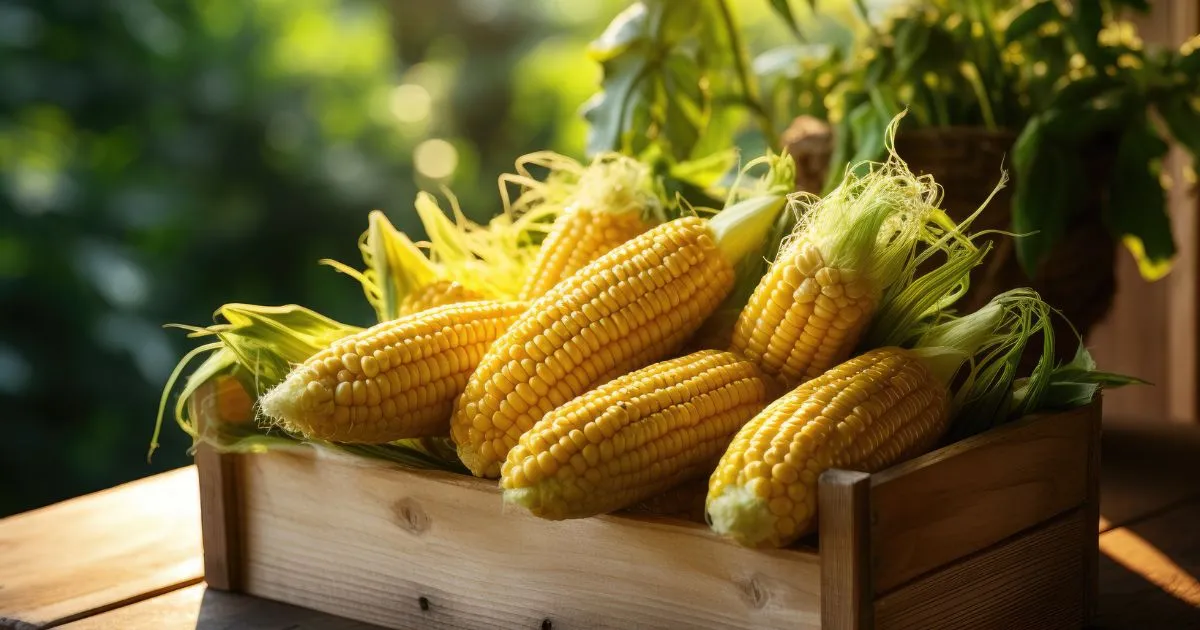Table of Contents
Corn is a staple crop enjoyed around the world for its versatility and delicious flavor. While it is traditionally grown in large fields, modern gardening techniques allow for successful container cultivation. Growing corn in containers is an excellent option for those with limited space, such as urban dwellers, patio gardeners, or those who want to experiment with growing their own food. This guide will walk you through everything you need to know about growing corn in containers, from selecting the right variety to harvesting your own delicious ears of corn.
Why Consider Growing Corn in Containers?
Growing corn in containers provides a viable alternative to traditional farming, offering many benefits, such as:
- Space Efficiency – Even those without large gardens can enjoy fresh corn.
- Pest and Disease Control – Containers minimize exposure to soil-borne diseases and pests.
- Soil Customization – Allows you to control soil composition and fertility.
- Accessibility – Ideal for people with mobility issues who prefer raised gardening solutions.
- Season Extension – Containers can be moved indoors to extend the growing season.
- Improved Drainage – Containers allow for better drainage control, reducing root rot risk.
- Portability – You can move containers to maximize sun exposure.
Selecting the Right Variety of Growing Corn in Containers
Not all corn varieties are well-suited for container gardening. When growing corn in containers, opt for dwarf or compact varieties such as:
- ‘Golden Bantam’ – A popular heirloom variety with sweet yellow kernels.
- ‘Baby Corn’ – Produces small ears, perfect for stir-fries.
- ‘Blue Jade’ – A compact and visually stunning blue-colored corn.
- ‘Sweet Painted Mountain’ – A multi-colored variety that is both ornamental and edible.
- ‘Sweet Symphony’ – Offers a delicious balance of flavor and size, ideal for container growing.
- ‘Kandy Korn’ – Known for its extra sweet flavor and robust growth in limited spaces.
Choosing the Right Containers
The choice of containers is crucial when growing corn in containers. Here are some key factors to consider:
Container Size
- Each corn plant requires at least a 12-inch diameter and depth to support its root system.
- A 5-gallon bucket is a good choice for single plants.
- Larger containers, like half barrels, can accommodate multiple stalks.
- Rectangular planters can be used for multiple rows, promoting cross-pollination.
Container Material
- Plastic containers – Lightweight and retain moisture well.
- Ceramic pots – Aesthetically pleasing but can be heavy.
- Fabric grow bags – Offer excellent drainage and aeration.
- Wooden barrels – Provide good insulation, maintaining stable soil temperatures.
Soil Requirements for Growing Corn in Containers
Corn thrives in well-draining, nutrient-rich soil. When growing corn in containers, use:
- A high-quality potting mix with good aeration.
- Compost or organic matter to enrich the soil.
- Perlite or sand to improve drainage.
- Aged manure to provide a slow-release nutrient source.

Ideal Soil pH
- A pH range between 5.8 and 6.8 is optimal for corn growth.
- Test the soil periodically to maintain proper nutrient balance.
Planting Corn in Containers
Seed Selection and Sowing
- Sow seeds directly into the container rather than transplanting seedlings.
- Plant seeds 1 to 2 inches deep and 4 to 6 inches apart.
- For pollination, plant at least 3 to 4 plants per container.
- Stagger planting to ensure continuous harvests over the growing season.
Watering Requirements
- Corn is a thirsty plant and requires consistent moisture.
- Water deeply at least once a day, ensuring soil remains evenly moist but not soggy.
- Mulching can help retain moisture.
- During hot weather, check moisture levels frequently to prevent drying out.
Fertilization and Nutrient Needs
Growing corn in containers requires regular feeding due to its high nutrient demands. Use:
- A balanced fertilizer (10-10-10) at planting.
- Nitrogen-rich fertilizer (such as fish emulsion or compost tea) during the vegetative stage.
- Potassium and phosphorus for kernel development.
- Epsom salt can be added occasionally to provide magnesium for stronger growth.
Supporting Corn Stalks
Corn can grow 5-7 feet tall, making stability crucial. When growing corn in containers:
- Use stakes or small trellises to prevent falling.
- Position containers against a wall or fence to provide support.
- If growing in a windy area, tie stalks together loosely for reinforcement.
Pollination Considerations
Since corn is wind-pollinated, container-grown corn may need assistance:
- Hand-pollinate by shaking the stalks to disperse pollen.
- Use a soft brush to transfer pollen between tassels and silks.
- Grow multiple plants close together to enhance natural pollination.
- Ensure proper air circulation to aid in pollination success.
Common Pests and Diseases
Pests
- Aphids – Control with neem oil or insecticidal soap.
- Corn earworms – Use Bt (Bacillus thuringiensis) or hand-pick them off.
- Cutworms – Place collars around young seedlings for protection.
- Raccoons and birds – Cover containers with mesh to deter wildlife.
Diseases
- Rust and smut – Ensure good air circulation and avoid overhead watering.
- Root rot – Prevent by using well-draining soil and avoiding overwatering.
- Fungal infections – Rotate crops and clean containers after each season.
Harvesting Your Corn
Corn is ready to harvest in about 60 to 100 days, depending on the variety. Signs of readiness include:
- Plump kernels that exude a milky liquid when pierced.
- Brown, dry silks at the tip of the ear.
- Firm ears that feel full when gently squeezed.
How to Harvest
- Hold the stalk and twist the ear downward.
- Harvest in the morning for the sweetest flavor.
- Consume immediately for peak freshness or store in the fridge.
- Consider freezing or canning surplus corn to enjoy later.

Conclusion
Growing corn in containers is a rewarding experience that brings fresh, homegrown corn to those with limited space. By selecting the right variety, ensuring proper soil and nutrients, and managing pollination effectively, you can enjoy a bountiful harvest right from your patio, balcony, or backyard. Whether you’re a novice gardener or an experienced green thumb, container gardening offers a unique and fulfilling way to cultivate this beloved crop.
Frequently Asked Questions (FAQs)
1. Can I grow corn in containers indoors?
While technically possible, corn requires full sunlight (at least 6-8 hours daily), making outdoor placement preferable.
2. How many corn plants can I grow in a single container?
A 12-inch wide container can support 2-3 plants, while larger containers can hold 4-6 stalks.
3. How can I maximize my corn yield in containers?
Use nutrient-rich soil, ensure proper pollination, and water consistently.
Growing corn in containers is an innovative way to enjoy fresh corn without a traditional garden. With the right care, you’ll be able to harvest sweet, delicious corn straight from your own patio!

